- Clone
- Michel-19 (See other available formats)
- Regulatory Status
- RUO
- Other Names
- HB15
- Isotype
- Rat IgG1, κ
- Ave. Rating
- Submit a Review
- Product Citations
- publications

-

Mouse CD83 transfected cells were stained with anti-mouse CD83 (clone Michel-19) Brilliant Violet 510™ (filled histogram), or rat IgG1, κ Brilliant Violet 510™ isotype control (open histogram).
| Cat # | Size | Price | Quantity Check Availability | Save | ||
|---|---|---|---|---|---|---|
| 121527 | 50 µg | $270 | ||||
This product is eligible for a 40% discount! Purchase two or more BV510, BV570, BV605, or BV650 products in any combination to qualify. Exclusions apply. Visit our webpage to view full promotion details or to contact your local BioLegend representative for a quote.
CD83 is a 45 kD type I transmembrane protein. It belongs to immunoglobulin superfamily and is expressed on mature dendritic cells and activated lymphocytes. CD83 is involved in the regulation of T cell development and immune response. Soluble form CD83 has been reported to inhibit dendritic cell maturation and dendritic cell-mediated T cell proliferation. Murine CD83 ligand has been found on B cells.
Product DetailsProduct Details
- Verified Reactivity
- Mouse
- Antibody Type
- Monoclonal
- Host Species
- Rat
- Immunogen
- Recombinant mouse CD83 protein
- Formulation
- Phosphate-buffered solution, pH 7.2, containing 0.09% sodium azide and BSA (origin USA)
- Preparation
- The antibody was purified by affinity chromatography and conjugated with Brilliant Violet 510™ under optimal conditions.
- Concentration
- 0.2 mg/mL
- Storage & Handling
- The antibody solution should be stored undiluted between 2°C and 8°C, and protected from prolonged exposure to light. Do not freeze.
- Application
-
FC - Quality tested
- Recommended Usage
-
Each lot of this antibody is quality control tested by immunofluorescent staining with flow cytometric analysis. For flow cytometric staining, the suggested use of this reagent is ≤ 0.5 µg per million cells in 100 µL volume. It is recommended that the reagent be titrated for optimal performance for each application.
Brilliant Violet 510™ excites at 405 nm and emits at 510 nm. The bandpass filter 510/50 nm is recommended for detection, although filter optimization may be required depending on other fluorophores used. Be sure to verify that your cytometer configuration and software setup are appropriate for detecting this channel. Refer to your instrument manual or manufacturer for support. Brilliant Violet 510™ is a trademark of Sirigen Group Ltd.
Learn more about Brilliant Violet™.
This product is subject to proprietary rights of Sirigen Inc. and is made and sold under license from Sirigen Inc. The purchase of this product conveys to the buyer a non-transferable right to use the purchased product for research purposes only. This product may not be resold or incorporated in any manner into another product for resale. Any use for therapeutics or diagnostics is strictly prohibited. This product is covered by U.S. Patent(s), pending patent applications and foreign equivalents. - Excitation Laser
-
Violet Laser (405 nm)
- Application Notes
-
Additional reported applications (for relevant formats of this clone) include: immunohistochemistry of acetone - fixed frozen sections4.
-
Application References
(PubMed link indicates BioLegend citation) -
- Cramer SO, et al. 2000. Int. Immunol. 12:1347.
- Fujimoto Y, et al. 2002. Cell 108:755.
- Mott KR, et al. 2009. Virol J. 6:56. (FC) PubMed
- Roland Cl, et al. 2009. Mol Cancer Res. 8:1761. (IHC) PubMed
- Masuda Y, et al. 2010. Cancer Immunol Immunother. [Epub ahead of print] (FC) PubMed
- Tze LE, et al. 2011. J Exp Med. PubMed
- del Rio ML, et al. 2011. Transpl. Int. 24:501. (FC) PubMed
- RRID
-
AB_3662362 (BioLegend Cat. No. 121527)
Antigen Details
- Structure
- Type I transmembrane protein, Ig superfamily, 45kD
- Distribution
-
Mature dendritic cells, activated lymphocytes
- Function
- Regulate T cell development and immune response, soluble form CD83 inhibit dendritic cell maturation
- Ligand/Receptor
- CD83 ligand
- Cell Type
- Dendritic cells, Lymphocytes
- Biology Area
- Costimulatory Molecules, Immunology
- Molecular Family
- CD Molecules
- Antigen References
-
1. Lechmann M, et al. 2005. Biochem. Biophys. Res. Commun. 329:132.
2. Kotxor N, et al. 2004. Immunobiology 209:129.
3. Leon F, et al. 2004. J. Immunol. 173:2995.
4. Cramer SO, et al. 2000. Int. Immunol. 12:1347.
5. Fujimoto Y, et al. 2002. Cell 108:755. - Gene ID
- 12522 View all products for this Gene ID
- UniProt
- View information about CD83 on UniProt.org
Related FAQs
Other Formats
View All CD83 Reagents Request Custom Conjugation| Description | Clone | Applications |
|---|---|---|
| Purified anti-mouse CD83 | Michel-19 | FC |
| Biotin anti-mouse CD83 | Michel-19 | FC |
| FITC anti-mouse CD83 | Michel-19 | FC |
| PE anti-mouse CD83 | Michel-19 | FC |
| APC anti-mouse CD83 | Michel-19 | FC |
| Alexa Fluor® 488 anti-mouse CD83 | Michel-19 | FC |
| Alexa Fluor® 647 anti-mouse CD83 | Michel-19 | FC |
| Brilliant Violet 650™ anti-mouse CD83 | Michel-19 | FC |
| PE/Cyanine7 anti-mouse CD83 | Michel-19 | FC |
| TotalSeq™-A0562 anti-mouse CD83 | Michel-19 | PG |
| TotalSeq™-C0562 anti-mouse CD83 | Michel-19 | PG |
| TotalSeq™-B0562 anti-mouse CD83 | Michel-19 | PG |
| Brilliant Violet 421™ anti-mouse CD83 | Michel-19 | FC |
| Brilliant Violet 510™ anti-mouse CD83 | Michel-19 | FC |
| Brilliant Violet 711™ anti-mouse CD83 | Michel-19 | FC |
Compare Data Across All Formats
This data display is provided for general comparisons between formats.
Your actual data may vary due to variations in samples, target cells, instruments and their settings, staining conditions, and other factors.
If you need assistance with selecting the best format contact our expert technical support team.
-
Purified anti-mouse CD83

mCD83 transfected cells stained with purified Michel-19, fol... -
Biotin anti-mouse CD83
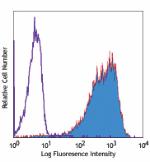
mCD83 transfected cells stained with biotinylated Michel-19,... -
FITC anti-mouse CD83
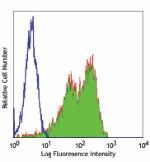
mCD83 transfected cells stained with Michel-19 FITC -
PE anti-mouse CD83
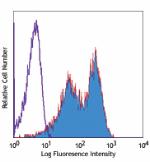
mCD83 transfected cells stained with Michel-19 PE -
APC anti-mouse CD83
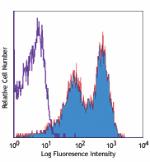
mCD83 transfected cells stained with Michel-19 APC -
Alexa Fluor® 488 anti-mouse CD83
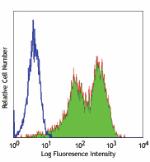
mCD83 transfected cells stained with Michel-19 Alexa Fluor&r... -
Alexa Fluor® 647 anti-mouse CD83
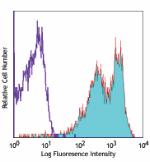
mCD83 transfected cells stained with Michel-19 Alexa Fluor&r... -
Brilliant Violet 650™ anti-mouse CD83
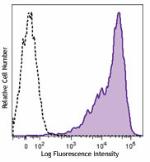
Mouse CD83 transfected cells stained with Michel-19 Brillian... -
PE/Cyanine7 anti-mouse CD83
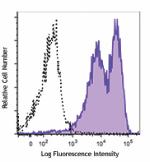
Mouse CD83 transfected cells were stained with CD83 (clone M... -
TotalSeq™-A0562 anti-mouse CD83
-
TotalSeq™-C0562 anti-mouse CD83
-
TotalSeq™-B0562 anti-mouse CD83
-
Brilliant Violet 421™ anti-mouse CD83
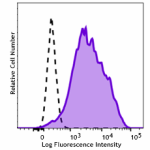
Mouse CD83 transfected cells were stained with anti-mouse CD... -
Brilliant Violet 510™ anti-mouse CD83

Mouse CD83 transfected cells were stained with anti-mouse CD... -
Brilliant Violet 711™ anti-mouse CD83

Mouse CD83 transfected cells were stained with anti-mouse CD...

 Login/Register
Login/Register 














Follow Us